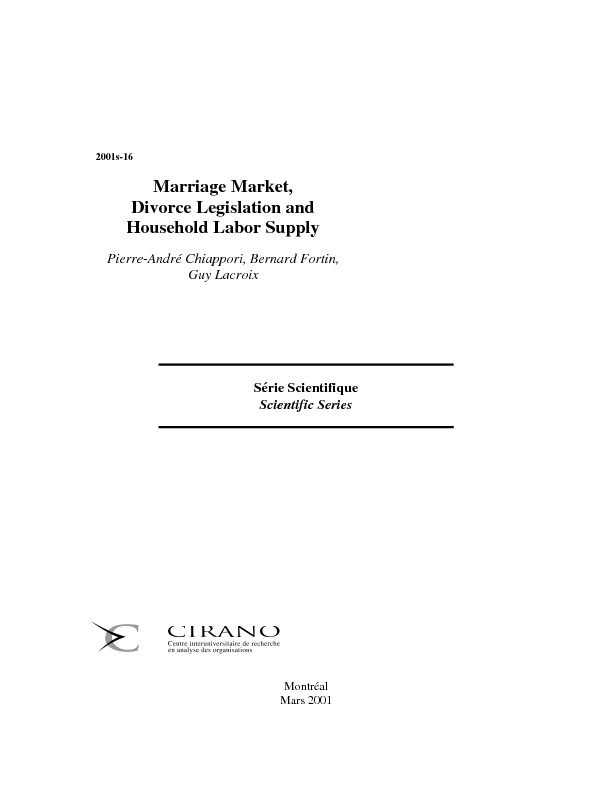Marriage Market, Divorce Legislation and Household Labor Supply
This paper provides a theoretical framework for analyzing the impact of the marriage market and divorce legislation on household labor supply. In our approach, the sex ratio on the marragie market and the rules governing divorce are examples of distribution factors. The latter are defined as variables that affect the household members' bargaining position but neither preferences nor the joint budget set. We extend the collective labor supply model developped by Chiappori (JPE, 1992) to allow for distribution factors. We show that our model imposes new restrictions on the labor supply functions and eases the identification of individual preferences and the intra-household decision process. The model is estimated using PSID data for the year 1988. Our results do not reject the restrictions imposed by the model. Also, the sex ratio and divorce laws deemed favorable to women are found to impact the labor supply behavior and the decision process in the directions predicted by the theory and to have sizeable effects.
[ - ]




